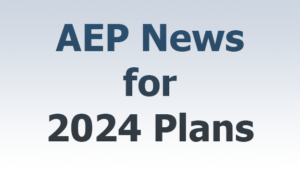by Lance D Reedy
The Part D Prescription (PDP) plans and Medicare Advantage plan were authorized by the 2003 Medicare Modernization Act passed by Congress in 2003 during the George Bush II administration.
2024 will mark the eighteenth year that I have been involved with the afore-mentioned plans. I have seen some reoccurring themes of what the PDP companies do to maintain their profitability, and that is the theme of this article.
The Original Structure of a PDP
Before discussing some of tricks of the trade that the PDP companies use to boost revenue, let’s look at the original plan design.
Phase 1: The member had to meet a $250 deductible.
Phase 2: The member paid 25% of the retail cost of the prescriptions up to the coverage gap limit.
Phase 3: The member was responsible for 100% of the costs when in the coverage gap (aka the donut hole).
Phase 4: This is the catastrophic phase where the member in general paid 5% for the cost of his/her meds. Note: In 2024 this is now zero percent.
Here are some takeaways:
The 25% co-insurance that I referenced in my companion article for the fictious Acme Value Prescription (AVP) plan is nothing new. However, most plans have gone to a flat copay system for several years. As several new expensive drugs have hit the market, the PDP companies are resurrecting the 25% coinsurance schedule.
Medicare has allowed the PDP companies to create alternative plans to the original design. This could consist of flat copays instead of the 25% coinsurance, no deductible plans, or reduced deductible plans. For several years we have seen plans where tiers 1 and 2 drugs were excluded from the deductible.
As many formerly expensive brand names have gone generic, we have seen some plans offering $0.00 or $1.00 copays for many of these low-cost generics. The following are a few examples of expensive brands that have gone generic. The brand name is followed by its generic equivalent.
Statins:
Crestor—Rosuvastatin
Lipitor—Atorvastatin
Zocor–Simvastatin
Blood pressure:
Norvasc–Amlodipine
Toprol– Metoprolol succinate
Cozaar—Losartan
Diovan–Valsartan
Diabetes:
Glucophage—Metformin
Actos– Pioglitazone
Others:
Plavix—Clopidogrel
Singular—Montelukast
and dozens more.
Expensive New Brand Name Drugs
What has changed the dynamic regarding the PDPs are the new generation of brand name drugs. Before going generic, many of these older brands listed above used to have a retail cost ranging from $100 to $200 per month. We used to think that these were expensive drugs.
Now we’re seeing brands with a retail cost of $500 to over $1,000 per month. Some popular examples are Eliquis, Xarelto, Mounjaro, Trelegy, and Ozempic.
The writing is on the wall. Many of the low premium PDPs will be phasing out covering these drugs with a fixed $40 to $47 tier 3 copay. Another popular plan made this change a year ago. Where we’ll likely see a continuance of the tier 3 and 4 fixed copays is with the high dollar PDPs. These premiums typically start at $70 per month and go up from there.
The PDP Companies’ Tricks of the Trade
First, it’s important to understand how the PDP companies are financed.
The government subsidy: We could dig though online documents of over 200 pages to feret out every last detail as to how the PDPs are financed. Let’s do the simplified version. According to KFF.org, Medicare (the Federal government) finances 74% of the PDP costs. Your premium covers 15%, and the states kick in around 11%. These percentages may vary from plan to plan, but this will give you the gist of how the financing works.
Even if your plan premium is zero, the PDP companies derive most, or all of their funding from state and federal governments. I fielded a phone call from a concerned client who read in her Annual Notice of Change (ANOC) that her 2024 PDP premium was dropping to less than a dollar. She thought something must be amiss.
She was relieved when I explained where the bulk of the financing comes from. In addition, I discussed how her Acme Value Prescription (AVP) plan was changing its tier 3 copay structure.
Trick Number One
A prescription drug company comes out with a super low premium plan. Because of the low premium, the plan gains more market share. After three years, give or take, the members have a substantial rate increase. Many members will change, but the companies understand senior psychology which is that people don’t like making changes. In the end, the member that doesn’t shop ends up paying the higher freight.
Recently, we have seen a new trend, and that is decreasing premiums. That’s good but keep the big picture in mind.
Trick Number Two: Tier Juggling
A tier 1 generic is moved to a tier 2 generic. Generally, this means that a $0.00 to $3.00 copay goes to a $4.00 to $8.00 copay. Even worse is when a tier 2 drug is kicked up to tier 3. Even though tier 3 drugs are called “preferred brands,” there are often many generics included as a tier 3 drug. For example, the generic equivalents to the brands Diovan and Micardis are Valsartan and Telmisartan respectively. Some of the low-premium PDPs have moved these generics from tier 2 to tier 3.
Trick Number Three: Dropping an Expensive Drug from the Formulary of a Budget PDP
Let’s say that the AVP plan used to carry the popular blood thinner Eliquis on its formulary. Buried in the verbiage of its ANOC is the list of drugs no longer included in their formulary for the next year. Who reads every word of their ANOC? Worse, some members say, “It’s all Greek to me, and I don’t understand any of it, so it goes into file 13.” PLEASE TAKE THE TIME TO CAREFULLY READ YOUR ANOC!
Trick number Four: Changing a Tier’s Copay Structure
Going from a flat copay to a percent (usually 25%) co-insurance: I have discussed this one in detail in my companion article, This Tier 3 Copay Change Could Cost You Hundreds of Dollars.
Trick Number Five: Disenrollment Confusion
A few years ago, our fictitious Acme Insurance Company carried these three plans:
Acme Pharmacy X Plan: $26 per month
Acme Regular Plan: $38 per month
Acme Premier Plan: $56 per month
They made changes to its Acme Pharmacy X Plan and renamed it to the Acme Value Prescription (AVP) plan. Because there were so many changes including formulary changes, Medicare required Acme to send out disenrollment notices to its Acme Pharmacy X Plan members.
Buried in the ANOC verbiage was the statement that those who remained in the Acme Pharmacy X plan would automatically be migrated to the Acme Premier Plan. Notice that this caused the premium to more than double.
Between emails and phone calls, we did our best to alert our clients to this issue. Unfortunately, there were those who we were unable to reach who were unaware of what was happening. Sadly, they were shocked when they were hit the big rate increase in January.
I don’t believe the companies are being malicious when this happens. As I understand it, when companies want to make major changes to their plans, Medicare requires them to migrate their members to the plan with a formulary that is at least as robust as the one in the outgoing plan. This inevitably winds up being the highest premium plan.
However, I think the companies could be more diligent with even a second or third communication alerting their members to an ensuing train wreck. The bottom line is this: PLEASE BE SURE TO READ EVERY COMMUNICATION FROM YOUR PRESCRIPTION OR MEDICARE ADVANTAGE PLAN. If you are not sure of what those notices mean, please contact us.
Conclusion
When it comes to casino gambling, most people understand that the House always wins. Slot machines have a payout ratio of around 83 to 95%. Sure, some gamblers hit the jackpot and win big, but it’s at the expense of the others that lose.
The Part D prescription companies lose on some members that are high prescription users. However, they are extremely profitable with those that are either non or minimal users. No matter how they structure their plans, they will be profitable. And that’s fine as long as it’s not too big of a profit. Just keep in mind as with the casinos, the House always wins. End
 by Lance D Reedy
by Lance D Reedy The Annual Election Period (AEP) for 2024 Plans
The Annual Election Period (AEP) for 2024 Plans